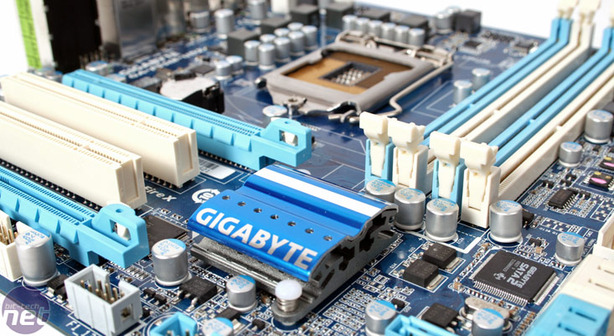Performance Analysis
At its BIOS defaults, the GA-P55M-UD2 turned in the some of the slowest Media Benchmarks result of any LGA1156 motherboard we've seen. While that maybe a docile result, the clear advantage of the UD2 comes from its overclocking ability, which boosted the Media Benchmarks scores by so much that it lead in almost every overclocked result.It was a little faster in Crysis, with a minimum frame rate of 25fps and the six SATA 3Gbps ports powered by the P55 chip read a healthy average of 228MB/sec, although the port driven by the Gigabyte SATA2 chip was much slower, averaging 174MB/sec. With the system overclocked, Crysis and both SATA controllers saw a substantial performance increase too.
Conclusion
If you're after something for its stock performance, the ASRock H55M Pro might be a better option as it's cheaper, or even the Gigabyte H55M-UD2H for the same price. However, the UD2 is not only easier to use versus competing boards BIOS', but the layout is notably improved too; particularly over its UD2 brother, the H55M.Where the UD2 comes into its own is delivering huge overclocks for its reasonable price - if you want bang for buck, look no further. It even has more ports and connections than it H55 cousin, and a cleaner layout. The only addition we'd feel any need to make is a USB 3 card such as the Asus U3S6. Even then, the UD2 provides, as you can use the secondary 16x PCI-E slot with this 4x card, and that'll also bag you a pair of SATA 6Gbps ports.
The Gigabyte GA-P55M-UD2 is a little monster overclocker that's equally a puppy to tame. It's cheap to buy and delivers a whole world more performance from a Lynnfield CPU. It continually makes our Buyer's Guides, and for good reason; if you're going for a Core i5-750 on a budget, then grab one of these!
- Performance
- x
- x
- x
- x
- x
- x
- x
- x
- -
- -
- 8/10
- Features
- x
- x
- x
- x
- x
- x
- x
- x
- -
- -
- 8/10
- Value
- x
- x
- x
- x
- x
- x
- x
- x
- x
- x
- 10/10
- Overall
- x
- x
- x
- x
- x
- x
- x
- x
- x
- -
- 9/10

Gigabyte GA-P55M-UD2

MSI MPG Velox 100R Chassis Review
October 14 2021 | 15:04










Want to comment? Please log in.